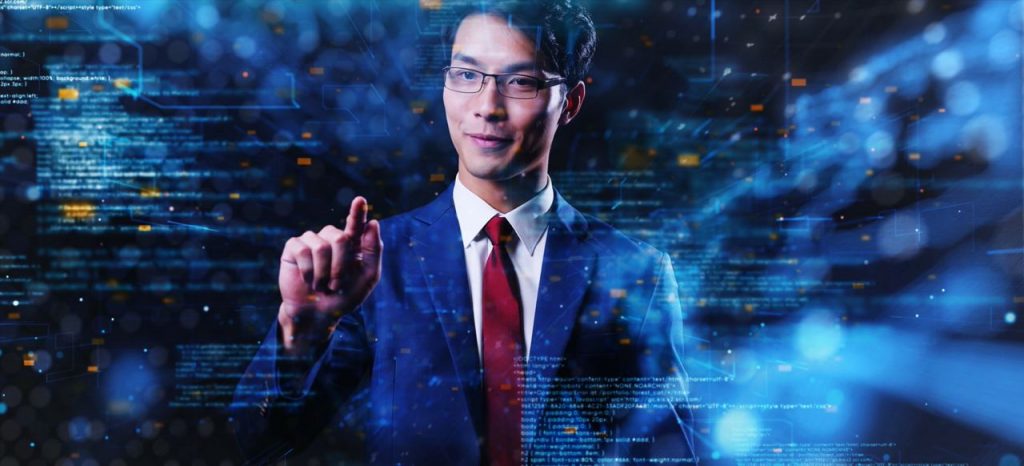- According to a study by Statista, the global market size for Web 2.0 services was estimated to be around 20.4 billion U.S. dollars in 2020.
- A report by ResearchAndMarkets suggests that the global Web 3.0 market size is projected to grow from 3.0 billion U.S. dollars in 2020 to 21.0 billion U.S. dollars by 2025 at a Compound Annual Growth Rate (CAGR) of 47.1%.
- A survey conducted by Domo found that 77% of marketers consider real-time personalization to be a crucial aspect of their marketing strategy, a capability that Web 2.0 technology can provide.
Web 2.0 and Web 3.0 are two terms you may have heard of but not fully understood. It is easy to get lost in technical jargon and feels overwhelmed. However, do not worry; we will explain Web 2.0 and Web 3.0 in plain English in this blog post.
In this article, we will talk about everything about web 2.0 and web 3.0. After reading the complete article, we assure you will clearly understand what these terms mean and how they differ.

What is Web3?
Well, you might be familiar with web1 and web2. Web1 was all about static websites with basic information, while web2 brought us dynamic websites with interactive features like social media and online shopping.
Now, web3 is taking things to the next level by introducing decentralization, blockchain technology, and more user control.
One of the critical features of web3 is decentralization. In web2, we rely on centralized servers owned by big companies like Google and Facebook to store our data and provide services. However, with web3, the power is in the hands of the users. Instead of relying on a single point of control, web3 uses decentralized networks powered by blockchain technology to provide services and store data.
Another essential aspect of web3 is the focus on user control. With web2, companies often collect and use our data without our knowledge or consent. However, web3 puts the control back in our hands. Through blockchain technology, we can have greater control over our data and how it’s used.
Difference between web3 and web2

When we talk about the differences, there is one thing: these technologies are similar but slightly different regarding the internet.
Web 2.0 is the current state of the internet, while Web 3.0 is the future of the internet. The primary difference between the two is the way they function.
Web 2.0 is focused on user-generated content and social interaction. It allows users to interact with each other and create content on websites such as social media platforms, blogs, and forums. This type of content is easily accessible and widely shared, which has led to the rise of influencers and online celebrities.
On the other hand, Web 3.0 is expected to be a more decentralized and interconnected web. It is built on top of blockchain technology, which means it will be more secure and private.
In short, we can say that Web 2.0 emphasizes reading and writing content, while Web 3.0 emphasizes the creation of content.
Examples of Web 3.0 technologies

Web 3.0 technologies are at the forefront of the internet’s evolution, and they’re set to transform how we interact with each other and the world around us.
- Here are some examples of Web 3.0 technologies that are changing the game in the industry, and we hope they will grow in the future.
- Blockchain: It’s a decentralized and secure way to store and share data, which makes it ideal for everything from financial transactions to voting systems. A real-life example of blockchain technology in action is cryptocurrencies like Bitcoin. These digital currencies use blockchain technology to keep track of transactions securely and transparently.
- Artificial Intelligence (AI): It is another Web 3.0 technology that’s becoming increasingly popular. AI is a technology that can learn and adapt, making it useful in various applications. One real-life example of AI is chatbots. Chatbots are programs that use natural language processing (NLP) to communicate with users. They can be used for everything from customer service to personal shopping assistants.
- Virtual Reality (VR): This Web 3.0 technology has already changed how we experience the world. VR is a fully immersive digital environment that allows users to interact with a simulated world. A real-life example of VR is gaming. Video game developers use VR to create more immersive and engaging gaming experiences that blur the line between the real and digital worlds.
- Internet of Things (IoT): It is another Web 3.0 technology set to revolutionize how we live and work. IoT is a network of devices connected to the internet, allowing them to share data and communicate with each other. A real-life example of IoT is smart homes. Smart homes use IoT technology to automate and control everything from temperature and lighting to security systems and appliances.

Advantages and Disadvantages of Web 3.0
Like any other technology, Web 3.0 has advantages and disadvantages regarding how it will impact the internet and its users.
What are the potential perks of Web 3.0 for people and enterprises?
In general, Web 3.0 offers various potential benefits that can positively affect users’ lives and strengthen the digital economy in the foreseeable future. If you are looking for WEB3 developers, Solidity development, let us know, we will provide you with the best expert. Among our in-house team, is a huge Department of WEB3 developers.
Advantages of Web 3.0:
Here are some of the benefits that Web 3.0 is expected to bring:
- Decentralization: Web 3.0 is designed to be more decentralized than its predecessor. This means data will be stored on a distributed network rather than centralized servers. This makes the internet more secure and less vulnerable to hacking and data breaches.
- Increased Privacy: Web 3.0 is designed to give users more control over their data and privacy. With blockchain technology, users can keep their information secure and prevent unauthorized access.
- Improved Efficiency: Transactions on Web 3.0 will be faster and more efficient than on Web 2.0. This is because there will be no need for intermediaries such as banks and payment processors.
- Innovation: Web 3.0 is expected to enable the creation of new types of applications and services that were impossible on Web 2.0. Some of the possibilities are decentralized marketplaces, social networks, and even virtual reality experiences.
- Trust: Trust is a crucial element of Web 3.0. With blockchain technology, users can trust that their data is secure and that transactions are transparent and tamper-proof.
The potential benefits of Web 3.0 are exciting and could revolutionize how we use the internet.
Disadvantages of Web 3.0
Although Web 3.0 has numerous benefits, it’s essential to acknowledge the potential downsides and risks that come with it.
Some of the disadvantages of Web 3.0 include the following:
- Lack of Compatibility: One of the most significant disadvantages of Web 3.0 is its lack of compatibility with current web technologies. Businesses must invest considerable money and time to transition to the new platform.
- Security Concerns: While Web 3.0 is designed to be more secure than Web 2.0, it’s not entirely immune to security threats. As with any new technology, there will be new vulnerabilities that hackers can exploit.
- Complexity: Web 3.0 is a more complex platform than Web 2.0, meaning it may be more difficult for users to navigate and use effectively. This could be a barrier to adoption for some businesses and consumers.
- Cost: Adopting Web 3.0 will require a significant investment in new technology and infrastructure. This could be a substantial barrier to adoption for smaller businesses and organizations with limited resources.
- Privacy Concerns: While Web 3.0 is designed to give users more control over their data and privacy, there are still concerns about how this data will be used and who will have access to it.
While these are some of the most significant disadvantages of Web 3.0, it’s important to remember that this new technology is still in development.
As the platform evolves and more businesses and consumers adopt it, many disadvantages may be mitigated.

Conclusion
In conclusion, Web 2.0 and Web 3.0 are two different stages of the internet’s evolution, each with unique characteristics. While Web 2.0 focuses on user-generated content and social interaction, Web 3.0 is more decentralized, private, interoperable, efficient, and built on blockchain technology.
As the internet continues to evolve, it will be interesting to see how these two stages develop and how they will shape the future of the web. If you need any help with your existing Web3 project, or you want to run a new one, speak to our expert and we will help you.



